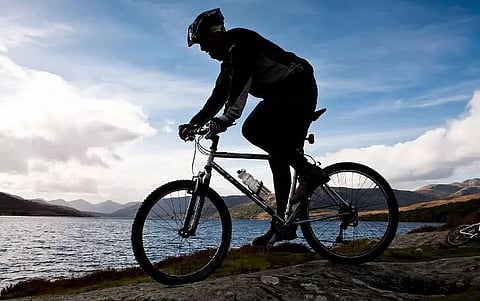
- Home
- Live Blog
- Breaking News
- Top Headlines
- Cities
- NE News
- Sentinel Media
- Sports
- Education
- Jobs

Bicycles have traditionally been more popular in rural India as a low-cost mobility solution for low-income households. Post-COVID-19 pandemic, bicycles have become popular among health and environment-conscious millennials in both rural and urban areas propelling high demand growth of over 20 per cent. Compared to conventional single-speed bicycles, enhanced bicycles with multiple gears are more popular for those taking to bicycle riding for fitness and leisure, but affordability remains a key factor in determining the actual numbers. The safety of bicycle users on roads due to the lack of separate cycling tracks has been preventing its mass adoption by Indian households. According to the National Family Health Survey Round 5 India Report, 50.4% of households in the country own bicycles with rural households accounting for 54% and urban households accounting for 43.2% of total households having bicycles. A higher percentage in rural areas can be attributed to schemes in various states including Assam distributing free bicycles to school-going students in different states, more particularly among girl students belonging to Below Poverty Line families to prevent dropouts. In rural areas of Assam, farmers ferrying their produce to the markets, and the traders transporting goods to and from the markets on bicycles are common sights. Once a household manages to make the one-time investment in buying a bicycle, insignificant maintenance costs and zero operational cost, unlike a fossil-fuel based bike or scooter with rising running costs due to increasing fuel prices, are factors that drive the demand for basic roadsters in rural areas. Speed is an issue for small businesses like milkmen, and newspaper hawkers in Guwahati, and most of them now prefer motorized two-wheelers to a bicycle for more coverage in the expanding city as their customers are spread in different localities and areas. But seasonal migrant traders like Kashmiri shawl and woollen garment sellers from Kashmir, and quilt and mattress makers from Bihar still prefer bicycles to ferry goods door-to-door in the capital city. Bicycles can decongest traffic in cities, and bring down the demand for fossil-fuel-based personal mobility solutions like two or three-wheelers and four-wheelers but only when separate tracks are provided to prevent mix-mode traffic. The absence of separate dedicated cycling tracks on city roads pose risk to bicycle riders which explains less demand in urban areas despite the surge in popularity of fitness cycling on city roads post COVID-19 pandemic. Indian Road Congress (IRC) recommended the construction of separate bicycle tracks on both sides of the roadway back in 1975 but even after more than four half decades since then this recommendation has failed to attract the attention of policymakers. The IRC pointed out that cyclists using carriageways along with motor vehicles and other road traffic cause hazards for themselves and others and impede the free flow of traffic and therefore need to be segregated from other traffic. The death of 4267 people in 9661 accidents involving bicycles in the country in 2020 speaks volumes about the risk involved in the adoption of bicycles for personal mobility in mixed-mode traffic. Awareness of safe riding and the mandatory wearing of helmets can prevent fatalities to a great extent but the risk of being hit by speeding vehicles on highways is quite high due to the absence of adequate service roads, safe road crossing zones and separate lanes for pedestrians and bicycle users. The Supreme Court Committee on Road Safety directed the government to enforce the mandatory use of specific reflectors by cycle manufacturers- four reflectors on pedals, two reflectors on the front and reach wheel each, one on the lamp bracket and one on the rear mudguard so that they are more visible to other approaching vehicles during the night and ensure the safety of cyclists. The Bicycles-Retro Reflective Devices (Quality Control) Order, 2021 which will come into effect on January 1, 2023, prohibits the production, selling, trading, import and stocking of retro-reflective devices means for bicycles without conforming to specific standards and without the Bureau of Indian Standards mark. As climate action goals require countries to de-carbonize mobility solutions by phasing out fossil fuel-based mobility with electric mobility, encouraging mass adoption of bicycles can bring about a significant reduction in carbon emission. This can be possible only if roads are improved to provide cycling tracks on both sides as recommended by the Indian Road Congress. Reserving certain roads in cities for cyclists and joggers on an experimental basis during weekends or on regular basis during morning hours will encourage fitness and leisure outdoor cycling. The real challenge for meeting climate action goals is to encourage the adoption of bicycles for regular visits to workplaces and educational institutions which requires the central, state governments and local bodies to prioritize cycling tracks in road projects-improvement of old roads and construction of new ones. World Bicycle Day today brings an opportunity for bicycle users to reclaim their safe space on roads.